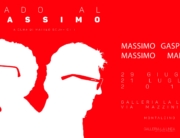ANTONIO BARBIERI ELISA BERTAGLIA LUCA GRECHI
Dream, myth and reality are some of the concepts combining Elisa Bertaglia’s, Antonio Barbieri’s and Luca Grechi’s artistic path who, through their peculiar syncretism, mix humans, plants and animals. Elisa Bertaglia’s and Luca Grechi’s sketches evoke fantastic atmospheres populated by anthropomorphic and suspended figures, as well as Antonio Barbieri’s human-like sculptures which appear to be drawn in iron wire and then hanged in an empty room: imaginary characters in timeless places. Rosalind Krauss says: “In Lacanian terms, the unreal is the reign of imagination, specified as atemporal as unbound from historical conditions” (The Originality of the Avant-Garde and Other Modernist Myths , 2007).
By admiring these works of art, you can perceive the trait d’union that joins the work of these three artists together: the “thin wire” materialises in Elisa Bertaglia’s delicate stroke, in a more intense one of Luca Grechi until it transforms into a third dimension in Antonio Barbieri’s work.
Like a phoenix, Barbieri’s “creatures” seem to rise again from their own ashes, or even better, from the trunk’s ashes on which they rest and from which they branch out and, expanding over itself, define their unique anthropomorphic appearance.
In a different way, Bertaglia’s sketches echo nature, in which infants hide in vibrant green foliage that wishes to recall youth and vital energy at the same time, their vulnerability.
In between the two artists’ mindset stands Grechi’s, that through his filamentous style of work creates and portrays imaginary figures inspired by men, plants and animals and combines each one’s physiognomy in an apparently fortuitous way, expressing and accomplishing the unknowable side of life, its weaknesses, but at the same time its creative strength.
Another aspect in common between the three artists is the absence of a real landmark both temporal and architectural: the sculptures and silhouettes often lay on artificial or absent structures, float and dive into an imaginary and imagined space. In this space, the anthropoids’ postures patterned by Barbieri evoke the infants’ attitude potrayed by Bertaglia, just as Grechi’s sketches recall humanized figures that merge with nature, giving unreal beings unexpected features.
In this deceptive dimension, the works establish a continuous dialog in which you can hear the expanding murmur of story telling and mythological tales, where fantasy collides and appeases with the archetypes, interpreted as “the deeper working principles of the psyche, like the soul’s roots that rule the prospective through which we reflect ourselves and the world” (James Hillman, Re-Visioning Psychology, 1975).
Independently and each one in their own way, the three artists work for a process of fusion of conscious and subconscious life, just like in dreams.
A sort of “XXI century Surrealism”, where unconsciousness seems to appear more docile thanks to a higher self-awareness: you can’t avoid reality, but on the contrary it is reality that unites with the imaginary creating dreams and gives birth to dreamlike conception.







